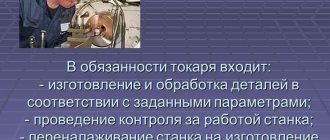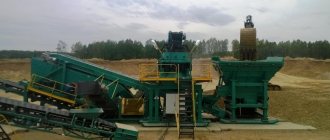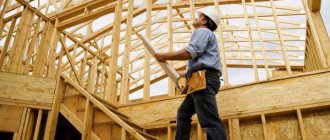Job description of a plasterer-painter
[organizational and legal form, name of organization, enterprise]
[position, signature, full name of the manager or other official authorized to approve the job description]
[day month Year]
Job description of a plasterer-painter [name of organization, enterprise, etc.]
This job description has been developed and approved in accordance with the provisions of the Labor Code of the Russian Federation and other regulations governing labor relations in the Russian Federation.
General provisions
1.1. The plasterer-painter belongs to the category of workers and is directly subordinate to [the position of the immediate supervisor].
1.2. The position of plasterer-painter is accepted for a person who has [enter the required] education without presenting requirements for work experience.
1.3. During the absence of the plasterer-painter, his official duties are performed by [position, full name].
1.4. A plasterer/painter should know:
– rules on labor protection, industrial sanitation and fire safety;
– rules for using personal protective equipment;
– requirements for the quality of work performed, for the rational organization of labor in the workplace;
– assortment and labeling of materials used, material consumption rates;
– types of defects and ways to prevent and eliminate them;
– types of materials used in the production of plastering, painting and wallpaper works and sand-free covering of surfaces;
– methods of preparing surfaces for painting, gluing and finishing work;
– name, purpose and rules for using hand tools, devices and equipment;
– properties of materials, compositions and ready-made solutions used in the production of plastering, painting and wallpaper works;
– design and operating rules of wallpaper cutting machines, troweling machines, mobile painting stations, mechanisms for preparing and mixing putty compositions, machines for mechanized application of plaster and putty;
– types of plasters and plaster mortars, methods of their preparation;
– methods of cutting wallpaper and preparing glue;
– methods of installing ventilation ducts;
– properties of solutions with chemical additives (chloride solutions, solutions with the addition of potash, calcium chloride), retarders and accelerators of set and rules for handling them;
– methods of performing improved plaster;
– methods of mechanized application of solutions and shotcrete surfaces;
– methods for selecting paint compositions.
Job responsibilities
The plasterer-painter is assigned the following job responsibilities:
2.1. Covering surfaces with simple or improved plaster and repairing plaster, caring for plaster.
2.2. Continuous leveling of surfaces.
2.3. Notching surfaces with a power tool.
2.4. Preparation of solutions from dry building mixtures on cement, gypsum and other bases.
2.5. Window sealing of boxes and junctions of large-panel partitions.
2.6. Grinding plaster.
2.7. Soaking and shotcrete of surfaces with their protection with polymers.
2.8. Applying plaster mortar to the surface using a mortar pump.
2.9. Installation of sand-free covering for high-quality painting.
2.10. Cutting seams between prefabricated reinforced concrete floor slabs and wall panels.
2.11. Mechanized application of mortar to walls and other surfaces, performing finishing plastering.
2.12. Ironing of the plaster surface.
2.13. Installation and fastening of frames for valves and blinds.
2.14. Installation of residential ventilation devices, checking their operation and strengthening of suspensions and brackets.
2.15. Grouting the finishing layer.
2.16. Painting frames with oil paint.
2.17. Puttying, sanding and priming surfaces manually and with mechanized tools.
2.18. Leveling the putty composition.
2.19. Priming surfaces with brushes, rollers, hand-operated spray guns, power tools and high-pressure units.
2.20. Trimming and fluting of surfaces.
2.21. Trimming wallpaper edges. Batch cutting of wallpaper on a machine.
2.22. Pasting wall surfaces with paper, plain and medium-density wallpaper, fabrics, high-quality wallpaper, leatherette, wood wallpaper, etc.
2.23. Changing wallpaper pasted overlapping and end-to-end.
2.24. Stencil painting in two or more tones.
2.25. Finishing wall surfaces according to sketches with adhesives in two to four tones.
2.26. Copying and cutting out stencils of any complexity.
2.27. Wallpapering ceilings.
2.28. Removing stains on pasted surfaces.
2.29. Washing plastering and painting mechanisms and tools upon completion of work.
2.30. [Enter as appropriate].
Rights
The plasterer-painter has the right:
3.1. For all social guarantees provided for by law.
3.2. Make proposals to the immediate supervisor to improve work related to the responsibilities provided for in this job description.
3.3. Require the management of the enterprise to provide assistance in the performance of their official duties.
3.4. Receive materials and information on your activities.
3.5. Get acquainted with the draft decisions of the enterprise management concerning its activities.
3.6. For the free issuance of certified special clothing, special footwear and other personal protective equipment.
3.7. [Enter as appropriate].
Responsibility
The plasterer-painter is responsible for:
4.1. For failure to perform or improper performance of the duties provided for in this instruction, within the limits determined by the labor legislation of the Russian Federation.
4.2. For offenses committed in the course of carrying out their activities - within the limits determined by the administrative, criminal and civil legislation of the Russian Federation.
4.3. For causing material damage to the employer - within the limits determined by the labor and civil legislation of the Russian Federation.
The job description has been developed in accordance with [name, number and date of document]
Job description of a plasterer-painter
The job description of a plasterer-painter is the main document defining the boundaries of his rights and responsibilities. The document provides a detailed description of the main working points necessary for an employee to perform his functional duties. The document usually includes four main sections, which can be supplemented if necessary. Additional sections usually specify job relationships and working conditions and are related to the specific requirements of the employer.
Sample job description for plasterer-painter
General provisions
- The position of a plasterer-painter belongs to the category of workers.
- In his work activities, the plasterer-painter reports to the shift supervisor.
- A person applying for the position of plasterer-painter must meet the following qualification requirements:
- completed secondary specialized education;
- At least 2 years of experience in the construction and repair industry.
- The plasterer-painter must have competencies in the following areas:
- current technological and fire safety standards;
- techniques for performing construction and repair work;
- standards for evaluating the work performed;
- assessment of materials used for plastering and painting;
- requirements for plastering and painting work;
- rules that apply to calculate material consumption;
- rules for using equipment, work materials and workwear;
- labeling and quality assessment of materials used;
- ways to prevent poor-quality work and defects;
- methods of selecting, mixing and applying paints;
- methods of using solutions used in construction;
- methods for preparing different surfaces for painting and plastering;
- operating rules for machines and tools used in work.
- A plasterer-painter should focus his work on:
- current industry norms and regulations;
- company documents that describe the issues regulating labor activities;
- contents of this manual.
- During the absence of the plasterer-painter, his work functions are performed by another employee, pre-determined by the shift supervisor.
Functional responsibilities
The responsibilities of a plasterer/painter include:
- Ensuring the safe storage of tools and materials issued by the employer.
- Ensuring high-quality painting of the required surfaces.
- Providing varnishing and polishing.
- Leveling work surfaces
- Plastering and priming of surfaces.
- Production of mortars from appropriate building mixtures and materials.
- Washing and cleaning tools and machines at the end of the shift.
- Restoring order at the site after completion of repair and construction activities.
- Carrying out work to prepare surfaces for painting and plastering work.
- Compliance with labor protection, fire and technological safety standards.
- Providing information and explanations on the work process to the shift supervisor and plant manager.
Responsibility
A plasterer/painter may be held liable for the following types of liability:
- For failure to comply with fire and process safety standards specified in the company’s documents and legal norms.
- For violation of the norms of this instruction, in accordance with current legislation.
- For material damage to the employer - within the limits of current legislation.
- For violations of legal norms committed during the work process - within the limits of the relevant legislation.
Rights
The plasterer-painter has the following rights:
- Make suggestions to improve the work process to your immediate supervisor.
- Require the employer to provide social guarantees prescribed in the relevant legislation.
- Require the employer and immediate management to create the conditions necessary to perform their job duties.
- Obtain the information necessary to perform their functions, within their competence.
- Receive equipment and workwear free of charge in accordance with the requirements of the work process.
Working conditions
- The plasterer-painter's work shift schedule is formed in accordance with the labor legislation of the Russian Federation and the standards prescribed in the employer's labor documentation.
- An employee may be sent on a business trip to another city in case of production necessity.
- The employee may be paid a bonus upon achievement of the quantitative and qualitative indicators specified in the employment contract.
- During work, the employee may be provided with special clothing, if necessary, at the expense of the employer.
Why is a job description drawn up?
The purpose of drawing up instructions is to define in detail the main points of interaction between the employee and the employer. With the help of instructions, these parties have the opportunity to resolve potential conflict situations without bringing them to the stage of open confrontation and legal proceedings.
The instruction helps the enterprise management organize a holistic process for the smooth functioning of the employee. The plasterer-painter himself, in turn, can calmly perform his work duties, based on the relevant provisions described in the document.
For both employee and employer, a carefully written job description is a way to resolve conflicts and a means of building quality working relationships.
What to pay attention to when drawing up instructions
Russian legislation does not contain rules that directly determine the format of instructions. As a result, the employer has the opportunity to necessaryly adapt the content of the document to his specific needs. Typically, the instructions include four sections, which can be supplemented if necessary.
Basic sections of the job description:
- General provisions.
- Functional responsibilities of a plasterer-painter.
- His rights.
- His responsibility.
Additionally, the instructions can include paragraphs that describe working conditions or other important points. The employer decides whether to include them or not, based on the specifics of the work and the scope of the enterprise itself. Next, we will analyze the contents of the instructions in more detail.
General section
This section describes the basic working relationship between a plasterer and his employer.
The key points here include the points that list the working skills required of the plasterer-painter. They can vary greatly depending on his rank and the specific area of his responsibility.
Important! The description of an employee’s skills and abilities should be approached with special responsibility. They must be written out fully and carefully to avoid conflict situations in the future.
Functional responsibilities of a plasterer-painter
This section specifies those responsibilities of a plasterer-painter that are in demand at a specific place of work. This includes items related to painting and plastering of various surfaces, as well as general requirements for compliance with technical and fire safety rules. Other points related to the specifics of the work of a particular company may be added to this section.
Responsibility
This section contains paragraphs that outline the employee’s responsibility for various violations in the workplace. Usually, several points are separately identified, for violation of which material, administrative or disciplinary liability occurs.
Important! When compiling this section, you need to understand that the instructions are not intended to describe the specific extent of responsibility and determine the degree of its severity.
Rights
Here is a list of the rights of a plasterer-painter, which should not cross the boundaries of his competence. Also, the list of rights can be changed based on the specifics of work activity at a particular place of work.
Additional items
These items are included if the employer sees the point of specifying some specific work issues in more detail. So, you can add some benefits to the employee or the opportunity to send him on a business trip abroad.
At the final stage, after the text of the instructions has been compiled and approved, the employee’s passport details and full name must be entered into it. Next, the parties add their signatures, and after that the instructions come into effect. There is no need to stamp the instructions.
Plasterer categories according to ETKS
Official documents identify six grade levels for the plasterer profession. The initial rank is second, the highest is seventh.
Plasterer of the second category
Basically, the specialist is engaged in auxiliary work: nailing shingles, waterproofing, making solutions, creating mixtures for work
Plasterer of the third category
Covers the surfaces with simple plaster, stretches a metal mesh over the entire frame. Performs grinding of plaster.
Plasterer of the fourth category
This specialist knows how to use automated equipment in his work.
Plasterer of the fifth category
Performs more complex types of work, knows how to create relief for surfaces.
Plasterer of the sixth category
Plastering of pillars, columns, pilasters and beams of constant cross-section with decorative mortars. Laying out and covering with plaster multi-centered and pointed domes, vaults and arches.
Plasterer of the seventh category
Everything that a seventh-grade plasterer does is a set of knowledge and skills that he received at previous levels. He can do almost everything, including restoration work on the facades of ancient buildings and architectural monuments. Such specialists are especially valued in the labor market and earn an order of magnitude higher than others.
Instructions
Plasterer
Sample instructions for plasterer
A sample job description is drawn up taking into account the professional standard Plasterer
General provisions
1.1. The plasterer is a worker and reports directly to ……… (name of position/profession of the manager)
1.2. To work as a plasterer, a person who has completed vocational training, retraining and additional vocational education programs on the basis of general secondary education is accepted.
1.3. A person is allowed to perform the work specified in paragraph 1.2 of these instructions:
1) passed in accordance with the Procedure for conducting mandatory preliminary and periodic medical examinations (examinations) of workers engaged in heavy work and work with harmful and (or) dangerous working conditions, approved. By Order of the Ministry of Health and Social Development of Russia dated April 12, 2011 N 302n, mandatory preliminary (upon entry to work) and periodic medical examinations (examinations), as well as extraordinary medical examinations (examinations);
2) having at least 1 year of work experience in accordance with the specialization or with secondary vocational education and the condition of passing a professional qualification exam in the organization to confirm the qualification category in accordance with the specialization - without requirements for work experience.
1.4. ……… (other general provisions)
Requirements for knowledge and skills
2.1. The plasterer must know:
1) methods for determining deviations of simple and complex surfaces;
2) methods of preparing surfaces for various types of plasters;
3) a method for diagnosing the condition of the base surface;
4) technology for installing plaster and rustication profiles, meshes, embedded reinforcement and jointing technology;
5) compositions of plaster, decorative and special-purpose mortars and methods of dosing their components;
6) technology for mixing the compositions of plaster mortars and dry construction mixtures;
7) rules for transportation, warehousing and storage of components of plaster mortars and dry building mixtures;
 technology for applying plaster solutions to surfaces manually or mechanically;
technology for applying plaster solutions to surfaces manually or mechanically;
9) methods of applying notches;
10) methods of reinforcing plaster layers;
11) methods and techniques for leveling, trimming, smoothing and structuring plaster solutions applied to surfaces;
12) technology for making covering layers, including puttying;
13) technology for plastering husks, appendages, slopes;
14) designs, materials of templates, patterns and methods of their manufacture;
15) technology for plastering surfaces of complex architectural forms;
16) methods for producing high-quality plasters and special-purpose plasters;
17) technology for performing sgraffito plaster;
18) a method for diagnosing the condition of a damaged surface;
19) methods of covering surfaces with plaster during the restoration of ancient buildings, structures and architectural monuments;
20) methods for removing damaged and peeling plaster;
21) techniques for preparing damaged areas of plaster before repair;
22) technology for preparing, applying and processing repair plaster solutions;
23) purpose and rules for using the tools and devices used;
24) rules for the use of personal protective equipment;
25) requirements for the quality of work performed;
26) types of defects and ways to prevent and eliminate them;
27) the procedure for notifying the manager of all deficiencies discovered during work;
28) rules for providing first (pre-medical) aid to victims of injury, poisoning and sudden illness;
29) Internal labor regulations;
30) rules of labor protection, industrial sanitation and personal hygiene, fire safety;
31) ……… (other requirements for necessary knowledge)
2.2. The plasterer must be able to:
1) hang surfaces;
2) clean, dust, prime surfaces, spray;
3) make notches, install plaster meshes, install plaster and rustication profiles, install embedded reinforcement, unstitch seams;
4) install simple structures of scaffolding and scaffolding;
5) dosage the components of plaster mortars and dry construction materials in accordance with the given recipe;
6) prepare repair plaster solutions;
7) remove peeling and damaged plaster layers;
 mix the components of plaster solutions and mixtures;
mix the components of plaster solutions and mixtures;
9) apply plaster solutions to surfaces manually or mechanically;
10) remove dust, perform jointing and reinforcement, prime the surfaces to be repaired;
11) make notches when plastering in several layers;
12) lay the plaster mesh in the applied solution;
13) level and trim plaster mortars applied to surfaces;
14) smooth, structure the plaster;
15) apply covering layers to the surface of the plaster, including putty compounds;
16) plaster husks, usenki, slopes;
17) make templates when installing rods and rustications;
18) plaster surfaces of complex architectural forms;
19) process plaster surfaces using the “sgraffito” technology according to sketches;
20) diagnose the condition and degree of damage to the plaster being repaired, including when repairing ancient buildings, structures and architectural monuments;
21) apply plaster solutions to damaged areas;
22) level and trim plaster mortars applied to surfaces;
23) smooth, structure plasters, apply covering layers;
24) use electrified and manual equipment and tools;
25) use personal protective equipment;
26) ……… (other requirements for necessary skills)
2.3. A plasterer of a higher rank must be able to perform work that is comparable in complexity to workers of lower qualifications, as well as supervise plasterers of lower qualifications (grade).
Labor functions
3.1. The labor functions of a plasterer are:
3.1.1. Plastering the surfaces of buildings and structures manually and mechanized:
1) preparing surfaces for plastering;
2) preparation of plaster solutions and mixtures;
3) performing plastering work on finishing the internal and external surfaces of buildings and structures;
4) plaster repair.
3.2. ……… (other functions)
Responsibilities
4.1. Before the start of the working day (shift), the plasterer:
1) undergoes a pre-shift (preventive) medical examination in accordance with the established procedure;
2) receives a production task;
3) if necessary, undergoes training on labor protection;
4) takes over the shift;
5) checks the serviceability of devices, tools, equipment, etc., personal protective equipment;
6) ……… (other duties)
4.2. While working, the plasterer:
1) performs the work for which he has been instructed and authorized to work;
2) uses special clothing, safety shoes and other personal protective equipment;
3) receives instructions from the immediate supervisor on the performance of the task, safe techniques and methods of work;
4) complies with the rules for using technological equipment, devices and tools, methods and techniques for performing work safely;
5) immediately notify the immediate supervisor of all deficiencies discovered during work;
6) complies with the requirements of personal hygiene and industrial sanitation;
7) ……… (other duties)
4.3. During the working day (shift), the plasterer performs the following duties as part of his job functions:
4.3.1. As part of the labor function, preparing surfaces for plastering:
1) checks the base for plaster;
2) prepares the base surface for plaster;
3) installs scaffolding and scaffolding in accordance with specialization.
4.3.2. As part of the labor function, preparation of plaster solutions and mixtures:
1) transports and stores components of plaster mortars and dry building mixtures;
2) carries out dosing of components of plaster solutions and mixtures;
3) mixes the components of plaster solutions and mixtures;
4) transports and stores components of plaster mortars and dry construction mixtures.
4.3.3. As part of the labor function, performing plastering work on finishing the internal and external surfaces of buildings and structures:
1) applies plaster solutions to the internal and external surfaces of buildings and structures;
2) produces notches when plastering in several layers;
3) performs reinforcement of plaster layers with meshes;
4) carries out leveling and trimming of solutions applied to the surface;
5) smoothes and structures the plaster;
6) applies covering layers.
4.3.4. As part of the job function, plaster repair:
1) assesses the condition and degree of damage to the plaster being repaired;
2) removes peeling or damaged plaster layer;
3) prepares damaged areas;
4) prepares repair solutions;
5) plasters damaged areas of plaster.
4.4. At the end of the working day (shift), the plasterer:
1) puts devices and tools in proper condition and transfers them for storage;
2) removes dirt from workwear and safety shoes, if necessary, places them for drying and storage;
3) submits established reports;
4) performs an inspection (self-examination);
6) ……… (other duties)
Rights
5.1. When performing his labor functions and duties, the plasterer has labor rights provided for by the employment contract concluded with the employee, the Internal Labor Regulations, local regulations, the Labor Code of the Russian Federation and other acts of labor legislation.
5.2. ……… (other provisions on employee rights)
Responsibility
6.1. The plasterer is subject to disciplinary action in accordance with Art. 192 of the Labor Code of the Russian Federation for improper performance through his fault of the duties listed in this instruction.
6.2. The plasterer bears financial responsibility for ensuring the safety of the inventory items entrusted to him.
6.3. A plasterer for committing offenses in the course of his activities, depending on their nature and consequences, is subject to civil, administrative and criminal liability in the manner prescribed by law.
6.2. ……… (other liability provisions)
Plasterer training
There is a shortage of qualified personnel in the construction industry. Many people learn the basics on their own, but for a specialist, secondary vocational education in this field is required.
Plasterers are trained in construction technical schools and colleges on the basis of general secondary education (9 grades) or complete secondary education (11 grades).
5 educational institutions where you can learn to be a plasterer:
- College of Modern Technologies named after Hero of the Soviet Union M.F. Panova.
- Nizhny Novgorod Construction College.
- Kazan Construction College.
- South Ural Multidisciplinary College.
- Omsk College of Industrial Construction and Transport Technologies.
An alternative option is plasterer courses based on the obtained SPO. It also provides practical training, but it is shorter. This option is preferable if you plan to work in your specialty and have extensive experience in finishing work, but there are no official documents.








